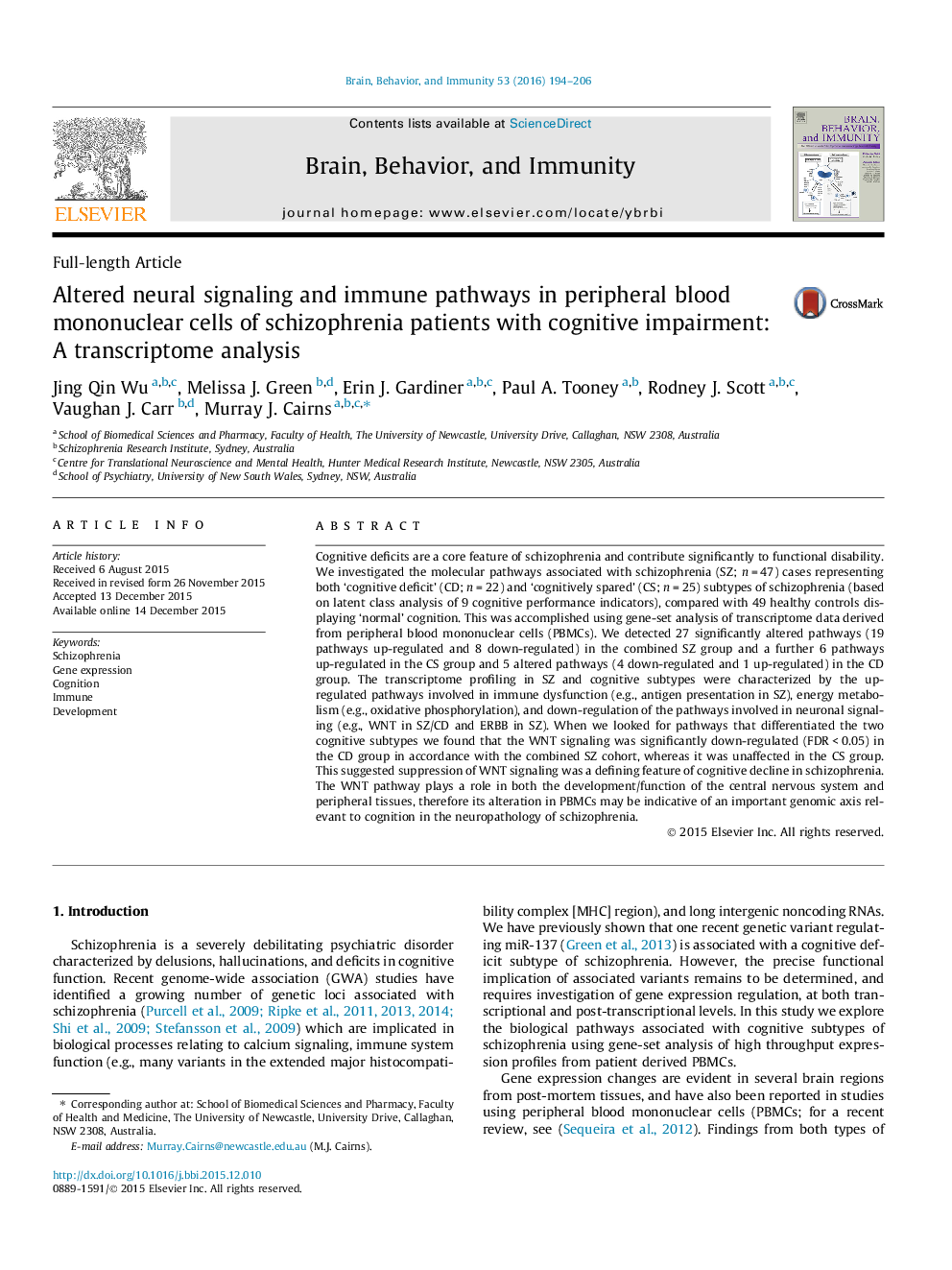| Article ID | Journal | Published Year | Pages | File Type |
|---|---|---|---|---|
| 922091 | Brain, Behavior, and Immunity | 2016 | 13 Pages |
•WNT pathway was down-regulated in CD and SZ groups, but not in the CS group.•Suppression of WNT signaling was a defining feature of cognitive decline in SZ.•CS, CD and SZ were characterized by the up-regulated pathways in immune dysfunction.•CS, CD and SZ were characterized by the up-regulated pathways in energy metabolism.
Cognitive deficits are a core feature of schizophrenia and contribute significantly to functional disability. We investigated the molecular pathways associated with schizophrenia (SZ; n = 47) cases representing both ‘cognitive deficit’ (CD; n = 22) and ‘cognitively spared’ (CS; n = 25) subtypes of schizophrenia (based on latent class analysis of 9 cognitive performance indicators), compared with 49 healthy controls displaying ‘normal’ cognition. This was accomplished using gene-set analysis of transcriptome data derived from peripheral blood mononuclear cells (PBMCs). We detected 27 significantly altered pathways (19 pathways up-regulated and 8 down-regulated) in the combined SZ group and a further 6 pathways up-regulated in the CS group and 5 altered pathways (4 down-regulated and 1 up-regulated) in the CD group. The transcriptome profiling in SZ and cognitive subtypes were characterized by the up-regulated pathways involved in immune dysfunction (e.g., antigen presentation in SZ), energy metabolism (e.g., oxidative phosphorylation), and down-regulation of the pathways involved in neuronal signaling (e.g., WNT in SZ/CD and ERBB in SZ). When we looked for pathways that differentiated the two cognitive subtypes we found that the WNT signaling was significantly down-regulated (FDR < 0.05) in the CD group in accordance with the combined SZ cohort, whereas it was unaffected in the CS group. This suggested suppression of WNT signaling was a defining feature of cognitive decline in schizophrenia. The WNT pathway plays a role in both the development/function of the central nervous system and peripheral tissues, therefore its alteration in PBMCs may be indicative of an important genomic axis relevant to cognition in the neuropathology of schizophrenia.
